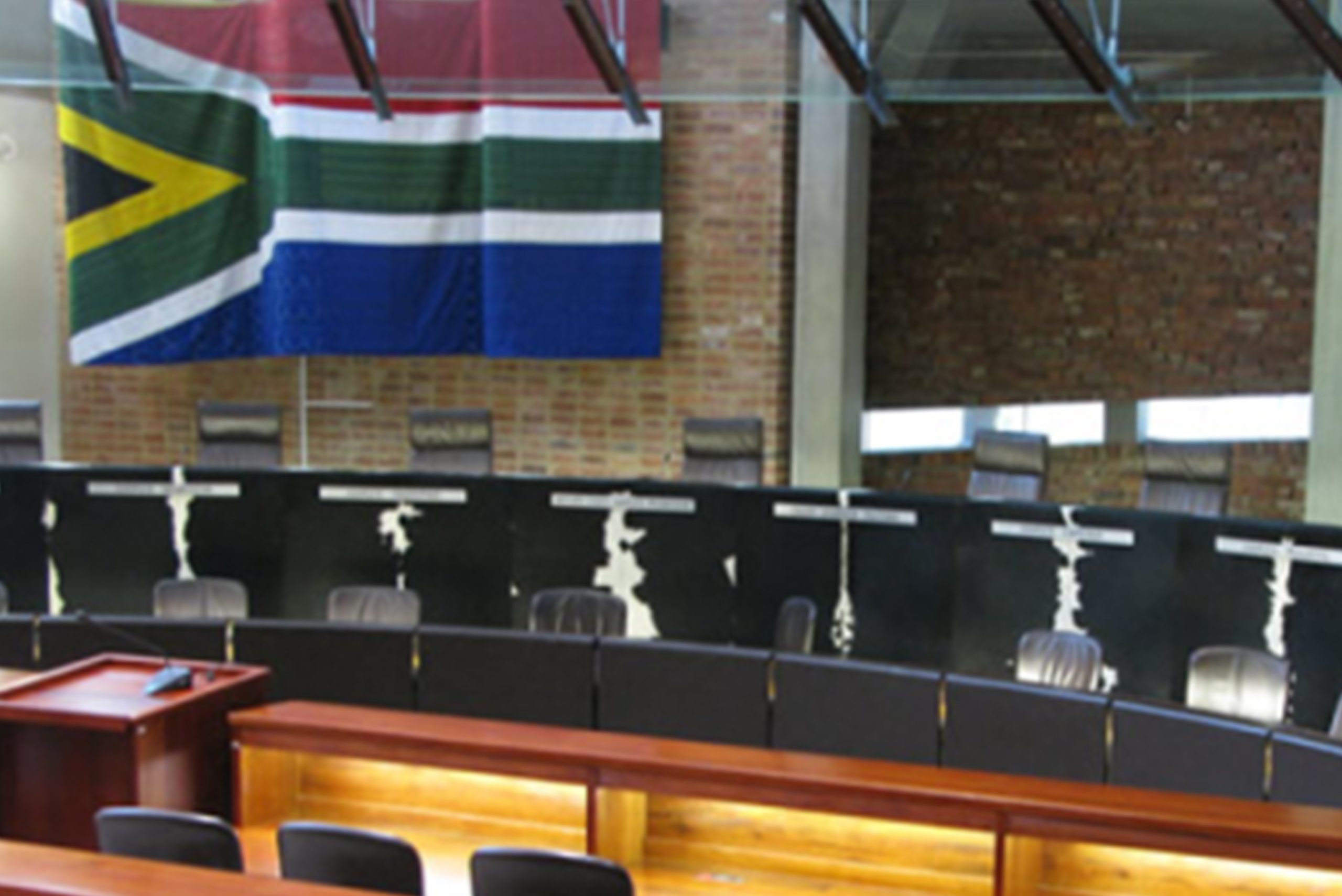Fixing industry: NEASA, get off the rooftops and into the ring
When the President made the call to business to ‘’get off the rooftops’’ and ‘’into the ring’’ to play its part in addressing crippling issues related to energy, logistics and crime to name a few – SEIFSA headed the call and continues to bring its capacity and resources to bear in addressing these and many other crises.
SEIFSA has consistently indicated its readiness to work with all stakeholders including government to shift the needle in putting our country onto a sustainable and inclusive growth path. We will, on the basis of such indications, continue to work with all stakeholders and not shy away from holding stakeholders to account as we act with urgency to rebuild trust amongst all social partners.
Conspicuously absent in all these engagements, apart from the periodic Newsletter, has been the voice of NEASA. In its own eyes, NEASA has a special understanding of the dynamics of the metals and engineering industries. Its boring refrain is both simple and simplistic: “All our economic pain comes from SEIFSA.’’ There is little wonder, then, that when one objectively surveys more than twenty years of NEASA’s participation on the Metals and Engineering Industries Bargaining Council, the only unbroken thread that can be discerned from its participation is its extraordinary and spectacular record of not having achieved a single thing for its constituency.
Times are tough in the country now, so many of the problems closing businesses and killing jobs could have been avoided. In these times, what can those of us mandated to act for business do? We are entitled and have every right to be angry and we should express it, but in ways that provides energy for action rather than draining us. Constructive criticism, engagement and action can make a difference, especially if we express our message in a way that models what we want to see.
It's easy to criticize, to engage in penny-pinching and throw barbs, but doing so without advancing any reasonable and constructive alternative is intellectually bankrupt. NEASA’s biggest failing is that it knows roughly what it is against, but has no credible positive programme to define and realize concrete policy objectives.
If only our problems were limited to hours of work and wages, how simple the road ahead would be in resolving these. At an aggregated level, compensation of employees makes up 20% of the total input costs to the metals and engineering sector. Should our focus and collaborative creative thinking not rather be on the 80% of the equation. The trouble is that even on these issues, NEASA has no real idea what to do to remedy them. It attacks all and sundry, but has no plan to get these issues addressed.
The future for this industry will be created by those who have the courage to take action.
NEASA quite simply doesn’t have what it takes to confront the challenges facing industry. NEASA is characterized by crass opportunism, hypocrisy and an authoritarian populism offering nothing to its followers.
NEASA may well have made gains in membership in recent years. This is good for our industry. Of course, the emergence of a credible alternative model addressing the plight of SMME’s would be even better. But since 2010, NEASA has centered its strategies on opposition to SEIFSA. But now that the Main Agreement has been gazetted and extended, NEASA suddenly look very shaky. The focus on SEIFSA leaves NEASA struggling for relevance in a post gazettal era. NEASA’s most recent Newsletter has the ring of desperation.
NEASA will have to develop a credible vision of the future that talks to the real challenges facing its membership on its own or in alliance with employer bodies across the spectrum and here’s the rub - in partnership with all stakeholders that NEASA over the years has been quick to point the finger of blame.
Deals or Agreements are not perfect, they are the product of negotiations and compromise. Reaching agreement with the other side whether in the commercial or industrial relations sphere is tough, walking away is easy. Continuing the engagement process when all else seems lost requires commitment, dedication and innovative and creative thinking.
SEIFSA representing 18 Employer Associations, with an 80-year track record of delivering industry solutions, employing close to 150 000 employees, is ready to work in partnership with all industry stakeholders, who understand, that deals are struck when adversaries arrive at the stark reality that time would be better spent on focusing on what they have in common instead of the issues that divide them.
Lucio Trentini
Chief Executive Officer
SEIFSA and MSHEQ join forces to promote safety in Metal & Engineering Sector
The Steel and Engineering Industries Federation of Southern Africa (SEIFSA) and MSHEQ Health and Safety Consultants and are joining forces to promote safety training in the Metals & Engineering (M&E) Sector.
“This is the first time we have set up this type of partnership. It makes sense to do it with SEIFSA as they represent a significant number of employers in the steel and engineering industry, a huge but dangerous industry. We are excited to see where this journey takes us,” says Charné Vosloo, the founder and managing director of MSHEQ Health and Safety Consultants.
Vosloo refers to the partnership as a symbiotic relationship and says she looks forward to a long-term training partnership.
“SEIFSA is happy to partner with MSHEQ in this initiative as we know how crucial workplace safety is, especially in our sector, and the best way to ensure the safety of workers is through high quality training,” says Lucio Trentini, the CEO of SEIFSA.
The Employment and Labour Deputy Minister is also committed to keeping workers safe. Boitumelo Moloi spoke about the importance of workplace safety at a recent Occupational Health and Safety (OHS) conference in Cape town, urging companies to develop a mandatory culture of health & safety compliance. “We should not allow compliance to happen by accident. If you think compliance is exorbitant, try noncompliance,” he warned.
Vosloo is in complete agreement: “We genuinely want employees to work safely so they can go home to their families, and just as importantly, we want employers to be committed to providing a risk free and safe working environment. Our philosophy is ‘if we don't train them, we can’t blame them’. All workers have the right to refuse to work in an unsafe workplace, but how do they know if they have not been trained?”
MSHEQ offers 21 accredited courses in various subjects, including first aid, firefighting and risk assessment, that run for one- or two-days sessions with the aim of preventing accidents and/or injuries in the workplace. Some courses are aimed specifically at managers while others cater for the needs of high-risk workers.
Vosloo says her all-female team as well as MSHEQ's 13 years of health & safety experience offer a new perspective in the male-dominated steel and engineering industry.
“SEIFSA is excited to join MSHEQ in this partnership and to shine a light on the importance of training both workers and managers to improving the safety record of companies in the Metals & Engineering Sector,” says SEIFSA CEO Lucio Trentini.
Lucio Trentini
Chief Executive Officer
Main Agreement to be tested in the Constitutional Court
The metal industry main agreement will go down in history as having created a number of firsts. The first time in thirty years increases are awarded on rands and cents (as opposed to on actuals), the first time in over ten years the main agreement has been gazetted and extended to all employers and employees in the industry and the first time, the main agreement has stood up to legal scrutiny. Not once, not twice but three times. First, NEASA’s application to the Labour Court was struck down with costs; second, NEASA’s leave to appeal suffered the same fate and was struck down with cost and thirdly, the Labour Appeal Court arrived at the same conclusion, albeit without costs.
NEASA has now taken a decision to petition the Constitutional Court for leave to appeal the Labour Appeal Court judgment and in so doing, NEASA has not minced its words, boldly stating “this fight is far from over and employers should not lose hope. All avenues have not yet been exhausted.” Indeed, NEASA has not exhausted all legal avenues in desperately seeking redress they firmly but mistakenly, believe is theirs.
One wonders if this is intentional or just coincidental, but it’s beginning to look very much like a “stalingrad strategy” deployed to delay or even avoid any possibility of finding common cause with the exhaustive list of respondents cited in NEASA’s papers. Section 34 of the South African Constitution guarantees everyone’s right to have any matter that can be resolved by the application of law decided before the courts and given that our courts have shown themselves reluctant to nip such repeated access to the Courts – the question becomes: Given who we are, who we represent (by far the greater majority of employers and employees in the sector are represented by SEIFSA affiliated member companies), what we do and the current state of our beleaguered sector – is this negative and obstructive process the best way for collective bargaining partners or adversaries to settle their differences? I think not.
The strategic logic for developing a better collective bargaining framework, should have as its starting point the ideals that are aligned to a commitment to decent and equitable labour practices and a fair economy that levels the playing field for all. Of course, these ideals require compromise and dealmaking, hardly evident in courts of law.
As matters currently stand, where an agreement is negotiated and concluded by bargaining agents who represent and employ the majority of employees falling within the council’s coverage, the extension of a bargaining council agreement is seen as a reasonable and necessary mechanism of sectoral collective bargaining. This is the legislative model which the social partners agreed on in 1995 and which Parliament duly enacted.
Section 32 of the Labour Relations Act expressly empowers – indeed, requires – Bargaining Councils and the Minister of Employment and Labour to follow a specific procedure for extending bargaining council agreements. This procedure was agreed upon in 1995 by the parties to NEDLAC, including the representatives of business. Twenty-eight years on, the system stands accused as being unfair. In reality, arguments supportive of this view are, at best, inconclusive or, at worst, speculative.
Preventing and/or delaying extension may well delay the implementation of the main agreement for non-parties, but the indirect effects are no less important. For the affected workers and their unemployed family members, this would almost certainly translate into greater distress. It is hard to reconcile this with the goal of social justice.
As we begin applying our minds to the tactics and strategy employers aligned to SEIFSA will be deploying in the next round of industry wage negotiations in 2024, we are cognisant that as a sector, we are still and, in all likelihood, will still be, in the midst of a number of crises, ranging from the lingering effects of the Covid-19 global pandemic to various economic (energy, logistics, supply chain, inflation, interest rates etc.) and political uncertainties. We will also be reminded that we will not be negotiating in a vacuum. The last thing industry needs is the prospect of another full-blown strike.
The current main agreement is undoubtedly a paradigm shift and illustrates how like-minded negotiating partners can work together in pursuit of a greater good. Compromise was clearly evident on both sides of the table; trust was deepened and relationships were forged. In the course of negotiations participants came to the conclusion that change was necessary, that we needed to move out of our respective comfort zones and conclude an agreement that not only addressed the concerns of all participating constituencies but more importantly laid the foundation for what to expect in 2024 – stability, industrial peace and certainty.
NEASA, should they win in the Constitutional Court will leave the industry in a perilous situation. The unions will retreat to their comfort zones, SEIFSA will in all likelihood find itself again as the main protagonist, representing the largest chunk of employers and employees in the sector and when negotiations unravel, all will bear the consequences and endure the destruction of value across all organizations irrespective of affiliation.
Courts settings are adversarial in nature, hardly conducive to building relationships. Don’t get me wrong, Courts have a critically important role to play and if it wasn’t for our robust judicial system who knows where South Africa would be today, but in the collective bargaining space, good agreements are founded on sound relationships and not selfish, self-serving power-driven dynamics.
SEIFSA representing the 18 independent Employer Organizations, the Plastic Convertors Association of SA, the Consolidated Employers Organization and the five biggest trade unions in the industry will collectively be serving opposing papers to NEASA’s petition for leave to appeal.
One hopes that for the greater good of the sector and in defense of a fair, just and equitable dispensation the result is favorable – if not, we may all stand to lose far more than we bargained for.
Lucio Trentini
Chief Executive Officer
Another Tough Year Ahead
With the festive celebrations now behind us and having ushered in a new year, all indicators point to 2023 being tougher than the year we leave behind.
For the most part 2022 was characterised by global and domestic turmoil, imported inflation, record levels of load-sheading and political uncertainty.
We come into 2023 knowing that things won’t be easy, the challenges facing us are many. South Africa’s economic outlook doesn’t look good and there is little investor confidence. The notion of job creation, on the back of an alarming high unemployment rate, has become elusive.
The persistent load-shedding, the worst in more than 10 years, has almost erased all the sector's post-Covid-19 gains and the energy crisis shows no signs of ending.
The year is already shaping up to be another busy and challenging one. In February SEIFSA will release the State of the Metals and Engineering Sector Report 2023, which will provide a full picture of what lies ahead for the sector, with inflation continuing to put pressure on the global economy and load-shedding remaining the biggest local headwind.
One of the key issues facing the Metal and Engineering (M&E) sector is the continued lack of public infrastructure spending. Local suppliers urgently need to be given preference when it comes to government projects if the sector stands any chance of lifting itself out of the doldrums.
All signs indicate that the tough global conditions of 2022 are likely to persist in 2023, with a hawkish US Federal Reserve setting the tone for other central banks on monetary policy. The focus on containing inflation tends to lead to a slowdown of activity, which has a significant effect on demand and investment in the M&E sector, along with the sectors it supplies, including mining, automotive and construction.
The other big global issues for 2023 is the continued conflict in the Ukraine. The conflict is raging on – nearing a full year since Russia's invasion on February 2022 – disrupting global supply chains, contributing to the global economy slowing down further as the conflict continues to spur inflationary pressures, sapping confidence and increasing risks worldwide.
Meanwhile, China is battling both high Covid-19 infection rates and the fallout from shutting down its economy in 2022 as part of its zero-Covid-19 policy - it will take time for it to recover from both of these crises.
Locally, the government's multiple service delivery failures are likely to continue to plague communities and the sector this year, with energy, logistics, roads, rail and water - staples of any manufacturing sector – stoking an already high unemployment rate and pilling extra pressure on the government as the cost-of-living crisis intensifies.
SEIFSA will continue to press the point that private-public partnerships are the best option of resolving these issues, with the private sector offering both skills and financial resources. Moreover, in a less supportive global economic environment, domestic economic policy must do a heavier lifting. A clear and well-thought through industrial policy plan is an absolute must if the sector is going to grow. The SEIFSA office will continue to play an active role in contributing to the shaping this agenda.
As we look forward to another challenging year, SEIFSA stands ready to be at your service and support you in every way we can in 2023.
We wish you a safe and productive 2023.
Lucio Trentini
Chief Executive Officer
The main agreement and productivity
Many would argue that productivity and referencing the Main Agreement hardly belong in the same sentence. Productivity in the context of centralized collective bargaining has been an extremely difficult nut to crack. Centralized collective bargaining by its very nature makes it near impossible to reward stellar performers. Year-in and year-out increases are negotiated and awarded on an across-the-board basis effectively rewarding workers for attendance.
The concept of productivity is simple: it measures the rate of output per unit of input employed. More productive processes yield more output at the same level of input. Whether productivity is viewed from an economic, company or country standpoint, being able to measure and track productivity is undeniably crucial to long-term success.
Notwithstanding the difficulties encountered at national level in attempting to onboard productivity into the Main Agreement, many companies have invested heavily in interventions aimed at improving productivity in the workplace e.g., investment in plant and equipment, innovation, improvements in supply chain logistics, incentive schemes, compensation, improving the work environment, investing in training and development, focusing on career development, wellness, diversity, increased responsibility and improving management quality.
Twenty-four years ago, the SEIFSA negotiating team during the 1998/ 1999 round of Main Agreement negotiations, took an unprecedented step to make productivity a non-negotiable employer demand but without compromising the protections afforded by clause 37 of the Main Agreement. Clause 37 is the protection enjoyed by employers against two-tier or plant level bargaining.
Whilst we realized it would be near impossible to define productivity for the entire sector, we were convinced we could structure a framework that could facilitate a conversation between workers their representatives and management on linking individual effort to reward. The trick was to ensure the protections built into clause 37 were not watered down, any such conversation would take place on an entirely voluntary basis and neither party could force the other to the table.
The preamble to the agreed Productivity Agreement introduces the notion of productivity in the Main Agreement by highlighting the following objective: Subject to the provisions of section 37 of the Main Agreement, an employer, his employees, any employee representative body and any trade union representing the affected employees may, by mutual agreement, enter into voluntary negotiations to conclude a productivity agreement with the objective of achieving measurable improvements in productivity performance and work life at company level, in terms of the principles and guidelines contained in this section.
Among the Productivity Guidelines is the following key clause: An opportunity exists… to negotiate an agreement at company level, with the objective of achieving measurable improvements in productive performance, increased productivity, efficiency, effective utilisation of all resources, flexibility and other related objectives – hardly wording one would expect in a collective agreement covering an entire sector!
Importantly, the Agreement expressly points-out, that the decision whether or not to negotiate and introduce productivity and efficiency improvement agreements at company level should be a voluntary one on both sides.
With industry moving back to the practice of granting Rand/cents increases calculated on the minimum gazetted rates of pay for each category of work, as opposed to awarding increases as a percentage on actual rates of pay and the five-grade job and wage structure looking a lot more interesting –
revisiting productivity in pursuit of achieving real gains in productivity, efficiency, effective utilization of all resources, flexibility and other related objectives – without compromising on rights and protections enshrined in clause 37 – just might be worth a second look.
Should you require any assistance on understanding any aspect of the Main Agreement, contact the SEIFSA Office on (011) 298-9400 and ask for Vuyiswa, Michael, Monica or Lucio - we will be more than happy to assist.
If you would like to find out a little bit more about the benefits of joining an Association federated to SEIFSA fill in the membership form, or send us an email at nuraan@seifsa.co.za
Enjoy the short break, we will catch-up again in the new year!
Lucio Trentini
Chief Executive Officer
Contextualising R78 per hour
Let’s unpack the constant referencing by our critics to an entry level rate of R78.00 per hour.
On 1 July 2022 Rate H was increased by the second leg of the three-year deal concluded last year by R 3.15 raising Rate H from R 52.52 to R 55.67 per hour.
Compared to the National Minimum Wage (R 23.19), Rate 1(a) Structural Engineering (R 45.91), Grade 1 Five Grade (R 51.41), Gate and Fence Manufacturing Rate H (R 41.80) or the Special Phase-in Dispensation to reach 60% of the 2020 Rate H by 30 June 2024 (R 29.73) there is no denying, it is too high. In 1968 Rate H was 19c per hour. That was 54 years ago.
However, unlike most of our critics we haven’t been sitting on our hands all this time nor have we been negotiating with ourselves. Visit the SEIFSA Boardroom and view the names of SEIFSA Presidents, Captains of Industry, stretching back to 1944 and I would dare anyone to call any one of them weak.
Returning to R 78 per hour. In South Africa if one is not covered by a collective agreement, the Basic Conditions of Employment Act (BCEA) is applicable, in addition to binding statutory levies and contributions affecting all employers in a sector like ours.
So, how does one arrive at a Rate of R78 per hour? Simple, by applying the principle of total cost to employment.
It’s interesting to note that even if one had the freedom to pay National Minimum Wage or any other affordable rate, various cost to employment conditions contained in the BCEA, together with statutory levies and contributions, would still apply.
Unfortunately, the notion of a free market, dictated by the natural laws of demand and supply, given our history and legacy, is just that – a notion. Since 1968 terms and conditions of employment in this sector have been bargained, fought for and begrudgingly agreed. Nothing was given away without difficult contestation.
Let’s examine in a little bit more detail the principle of total cost to employment.
MAIN AGREEMENT TOTAL COST TO EMPLOYMENT: 2022
| Main Agreement and BCEA*
* Asterix denotes must be observed even if not covered by the Main Agreement |
Cost to Company |
| 1. Annual Leave (15 days)* | 6.41% |
| 2. Additional annual leave (5 days on fourth time of proceeding on leave) | 2.14% |
| 3. Leave enhancement pay | 8.33% |
| 4. Paid sick leave (30 days in a 3-year cycle – effectively 10 days per year)* | 4.27% |
| 5. Sick Pay Fund contributions* | 0.09% |
| 6. Family Responsibility Leave (3 days)* | 1.28% |
| 7. Public holidays* | 5.13% |
| 8. Pension / Provident Fund Contributions* | 7.70% |
| 9. COIDA / WCA* | 1.15% |
| 10. UIF* | 1.00% |
| 11. Skills Development Levy* | 1.00% |
| Total additional cost to company | 38.50% |
Importantly, the above excludes: MEIBC Administration Levy, MEIBC Dispute Levy, PPE, COVID Compliance etc. which must be paid whether or not one is covered by the Main Agreement – so, let’s round the CTC to 40% i.e., a 40% add on to the base rate of R 55.67 – which takes you to approx. R 77.93
However, keep in mind that if one were not covered by the Main Agreement all the above items denoted by an asterix would still apply, approx. 30%
The point being that if one is going to blandly throw out a number, give it some context, narrative and explanation. Simply lamenting it’s too high is just not good enough.
No one across all employer ranks is saying the current entry level rate is not too high. But there is context, history and narrative to this reality. In an ideal collective bargaining world this on its own would be enough to rally all employer groupings behind a single cause, a cause that seeks to ensure that if we stand any chance of encouraging entry of new workers into the industry, the entry level rate must be reviewed but alas we would rather spend all our time and energy fighting each other in the Courts, how short sighted.
Should you require any assistance on understanding any aspect of the recently gazetted Main Agreement, contact the SEIFSA Office on (011) 298-9400 and ask for Vuyiswa, Michael, Monica or Lucio - we will be more than happy to assist.
If you would like to find out a little bit more about the benefits of joining an Association federated to SEIFSA fill in the membership form, or send us an email at nuraan@seifsa.co.za
Next week I will address the flexibility benefits contained in the Main Agreement, watch this space!
Lucio Trentini
Chief Executive Officer
Public sector strike
PUBLIC SECTOR STRIKE
Management may be aware, from recent media reports, that COSATU is preparing its affiliated membership for a national day of protest action in the form of marches and pickets on Friday, 2 December 2022 in support of higher wages.
Protest Action and the Labour Relations Act
The Labour Relations Act (LRA) permits registered trade unions or federations such as COSATU, to undertake protected protest action to promote the social and economic interests of workers provided that they observe the procedural requirements contained in Section 77 of the LRA 66 of 1995, as amended.
This application was duly considered by NEDLAC and the NEDLAC Section 77 Standing Committee has determined the notice to be compliant with the administrative requirements of the LRA.
Consequently, employees participating in any action on 2 December 2022 (between 0:00 and end at 23:59 on 2 Dec) will be protected by the normal rules regarding protected strikes, namely: no work, no pay and no disciplinary action.
Furthermore, please be advised that with NEDLAC pronouncing that the action is protected, any other trade union or for that matter any other employee may elect to piggyback on the protected action.
Consequently, any employees participating in any action on 2 December 2022 will be protected by the normal rules regarding protected strike action, namely: no-work-no-pay and no disciplinary action.
Management Guidelines on Possible Absenteeism on Friday, 2 December 2022
SEIFSA recommends that management adopt the following course of action in dealing with any stay-away from work on the 2 December:
- Inform all workers that any absences related to the protest action will be treated on the following basis:
- no work, no pay; no disciplinary action;
- a shift for leave pay and leave enhancement pay qualification purposes will be lost in respect of the day’s absence; and
- any overtime worked during the course of the week will be paid at ordinary rates to make up for the lost ordinary working hours from Friday, 2 December 2022.
The Staff of the SEIFSA Industrial Relations Division are available on (011) 298-9400 to provide any further advice and/ or assistance to management on the contents of this management brief.
Special phase-in dispensation
SPECIAL PHASE-IN DISPENSATION
Given that the Main Agreement was last gazette and extended in 2010 and many employers have been operating outside the terms and conditions of the Main Agreement – particularly when it comes to rates of pay – the signatories to 2021/ 2024 Main Agreement agreed it would not be feasible or practical to expect these employers to come on board overnight.
Hence, it was agreed that a phased approach would be needed and that this process would form part of a broader project aimed at eventually achieving parity with the Main Agreement. Phase one of the project establishes the target of reaching 60% of the 2020 minimum rates of pay by 30 June 2024.
For purposes of illustration, below is the 2020 general wage table and the target of 60% to be reached by 30 June 2024.
|
Rate |
Minimum Wage Rates as at 1 July 2020 | 60% of 2020 Minimum Wage Structure |
|
A |
84,75 | 50,85 |
|
AA (6) |
80,83 |
48,50 |
| AA (start) | 77,18 |
46,31 |
|
AB |
73,73 |
44,24 |
|
B |
70,53 | 42,32 |
| C | 67,96 |
40,78 |
|
D |
66,58 | 39,95 |
|
DD |
61,76 |
37,06 |
| DDD | 59,10 |
35,46 |
| E | 56,47 |
33,88 |
| F | 54,10 |
32,46 |
| G | 51,65 |
30,99 |
| H | 49,55 |
29,73 |
The same principle applies across all the main agreement wage tables (i.e., electric cable; structural engineering; five grade; vehicle drivers; gate and fence manufacturing – but excluding apprentices and construction sites covered by a project labour agreement).
In broad terms, the special phase-in license of exemption will stipulate that notwithstanding that an employer is paying below 60% of the 2020 rates (as per the table above), leave pay and leave enhancement pay must be calculated on the 60% rate as set out above.
Employers operating in terms of a special phase-in license of exemption paying less than 60% of the 2020 wage rates will be required to implement the 1 July 2023 wage increases as a Rand/ cents increase on what workers are actually earning.
Employers paying above 60% but less than 100% of the 2020 rates, operating in terms of a special phase-in license of exemption, will be required to award the 1 July 2023 wage increases as a Rand/cents increase on what workers are actually earning and calculate leave pay and leave enhancement pay on workers actual rates of pay.
In light of the above, the MEIBC National Exemptions Policy has been amended by way of the insertion of a new section dealing with Phase-In Exemption.
This new clause, referencing the Special Phase-In Exemption, is available to all employers covered by the scope of application of the Main Agreement, regardless of whether or not they are members of a party or non-party employer organization.
The next round of industry increases will become applicable on 1 July 2023 and will again, be awarded on a Rand/cent basis.
Any employer wishing to apply for an exemption from these increases is at liberty to do so on or before 31 July 2023.
Should you require any assistance in applying for a Special Phase-in Exemption or any other matter covered by the Main Agreement, please contact the SEIFSA Office at (011) 298-9400 and ask for Vuyiswa, Michael, Monica, or Lucio - we will be more than happy to assist.
If you would like to find out a little bit more about the benefits of joining an Association federated with SEIFSA fill in the membership form, or send us an email at nuraan@seifsa.co.za
Next week I will address the elephant in the room, R78 per hour, watch this space!
Lucio Trentini
SEIFSA Chief Executive Officer
Applying for exemption from the Main Agreement
A key provision of the recently gazetted Main Agreement is that it must contain an effective procedure to deal with applications for exemptions and such applications must be dealt with within a period of 30 days. An additional legal requirement is that the collective agreement must make provision for an independent body to her and decide as soon as possible and not later than 30 days after the appeal is lodged, any appeal brought against the bargaining council’s refusal to grant an exemption.
A wage or wage-related exemption (e.g., wage increases, relief from the leave enhancement pay, etc.) will require the submission of audited financial statements, an auditor’s report together with balance sheets and income statements for the last three months. The application will also require a motivation and business plan.
It is important to note that the Bargaining Council is obliged to consider all applications for exemption irrespective of the basis on which they are founded.
This effectively means that financial reasons are not the only criteria which must be considered. Employers may apply for an exemption on any one or more of the following reasons (but not limited to):
- increased competitive threats;
- the inability of the employer to pass on cost increases to final customers;
- technological changes threatening business survival;
- inherently high difference between wage rates actually paid and current affordability of market competitive considerations facing an employer;
- market decline, projections, etc.;
- loss or potential loss of business;
- existing/ current unprofitable contracts the consequences of which are only likely to manifest themselves in future/ current (unreported) accounting periods;
- expansion opportunities (including capital investments) where cheaper labour costs could influence investment decisions; and/ or
- new ventures/ operations which justify retention or creation of job opportunities at reduced wage costs.
Importantly, reaching an agreement with affected staff is not a prerequisite for being granted an exemption. What is important is the financials and accompanying narrative supporting the application.
Should you decide to submit an application, rest assured that the financials are stripped-out and embargoed and are only seen by an independent auditor appointed by the bargaining council. All the Exemptions Committee sees is a report, essentially summarising the financial health of the company and a recommendation on whether or not the financials, motivation, and business plan support the application being sought.
Whilst the deadline date for party employers has passed (i.e., 31 October) non-party employers have until 17 November to submit an application.
For party employers who for one or another reason missed the deadline, all is not lost. If you are in this position and would still wish to submit an exemption application, please contact the SEIFSA Office on (011) 298-9400 and ask for Vuyiswa, Michael, Monica, or Lucio we will be more than happy to assist.
If you would like to find out a little bit more about the benefits of joining an Association federated to SEIFSA fill in the membership form or send us an email at nuraan@seifsa.co.za – we know you won’t be disappointed.
Next week I will cover the ins and outs of the Special Phase-in Dispensation, watch this space!
Lucio Trentini
CEO
We Need to Find a Common Purpose
I am well aware that trust is exceptionally hard to earn and easy to break. But we’re not going to get out of this mess by tinkering at the edges, making small adjustments and compromises here and there and hoping things will get better.
At the Metal and Engineering Industries Bargaining Council, the apex industry body, where business and labour meet, a new way of engaging with one another is desperately needed. If we all stay in our lanes, defend our corners and remain fixed in a win/ lose paradigm we will simply not find a common purpose about where to go, together.
The Bargaining Council, created almost eighty years ago, was established for a common purpose, painstakingly crafted by business and labour leaders of the day, determined we’d all have a better future.
As our country contemplates coalition government at all levels, one is reminded of how feuding employer organisations on the bargaining council tried working together. In truth, these experiences were neither enduring nor effective and anything but successful. Representatives, elected by their respective constituencies, to represent the best interest of the industry, have failed dismally in distinguishing between party and purpose.
Inevitably, where party overrules purpose, irreconcilable differences, indecision and destruction is what follows. It serves little purpose in allocating blame; we are all complicit in varying degrees and we all stand accused of not just having failed our respective constituencies but more importantly the industry.
For the narrative to shift and the paradigm to change, we have little choice but to gather again. With the gazettal of a new set of administration and dispute resolution levies, the Council has been given a new lease of life, a second chance to repurpose its core function. However, even with all the will in the world, the Council cannot do this on its own and hence the question, what can we, as elected representatives, do to shift the narrative away from win/ lose to win/win?
The need for growth is beyond urgent. We require a substantial shift from the failed modus operandi of the last 12 years. What is needed is an end to the self-inflicted damage that party posturing and the pursuit of narrow agendas have caused.
As parties to the bargaining council, we haven’t had a good track record in the past 12 years. We have all to varying degrees been guilty of prioritising one’s own selfish needs and agendas above what could be in the best interest of the sector as a whole.
The situation is beyond urgent. We need a plan of action. If we, as elected representatives on the Council, cannot chart a clear course ahead in tackling the obstacles in the industry to job security and growth, what is the point of holding onto a bargaining council?
What we need, now more than ever before, is an understanding of the difference between compromise and consensus. There is little doubt we need more, much more of the latter. As I’ve alluded, there is more uniting the different parties on each side and across of the table than dividing us.
Afterall, we are all in this together.
Lucio Trentini
Chief Executive Officer










